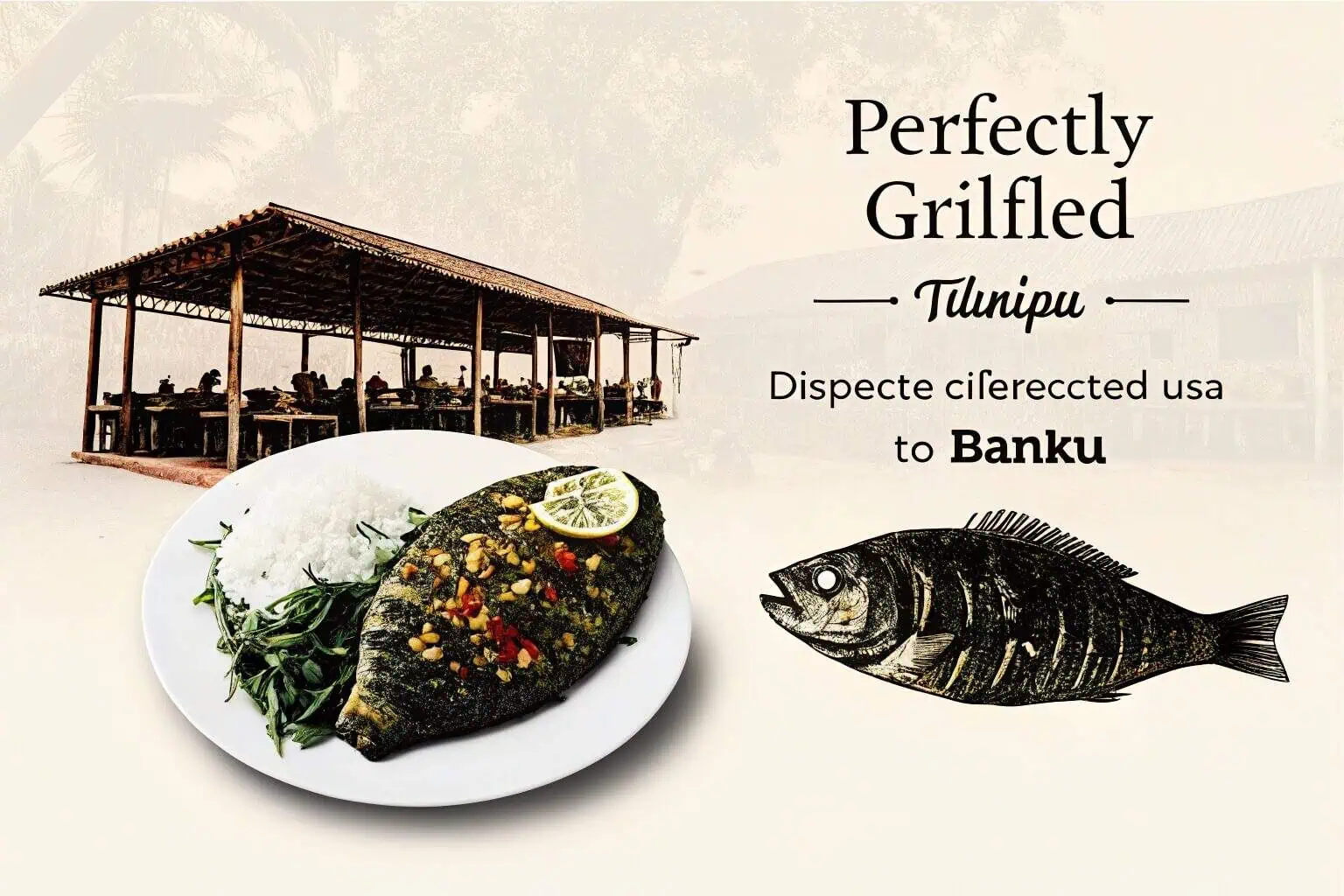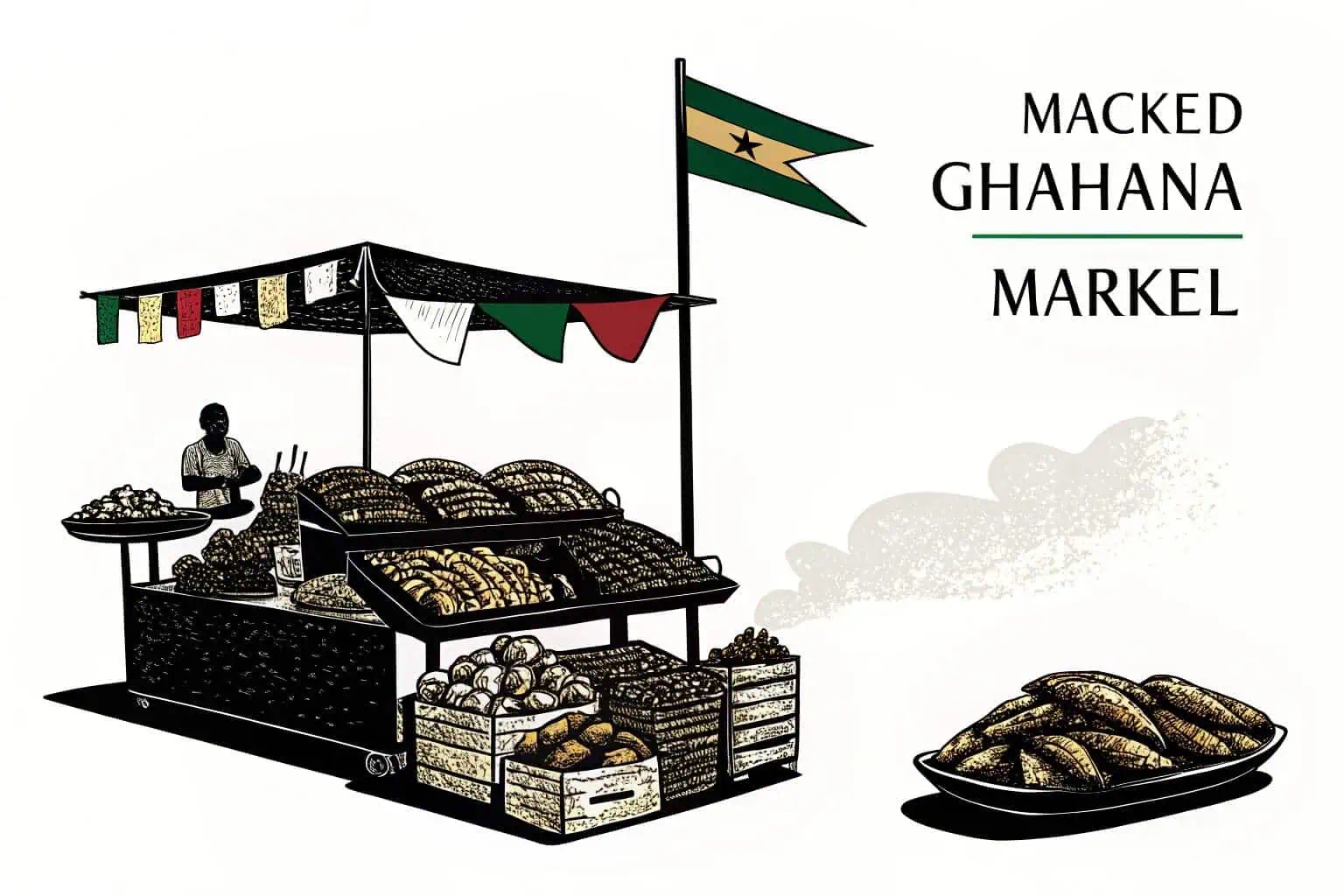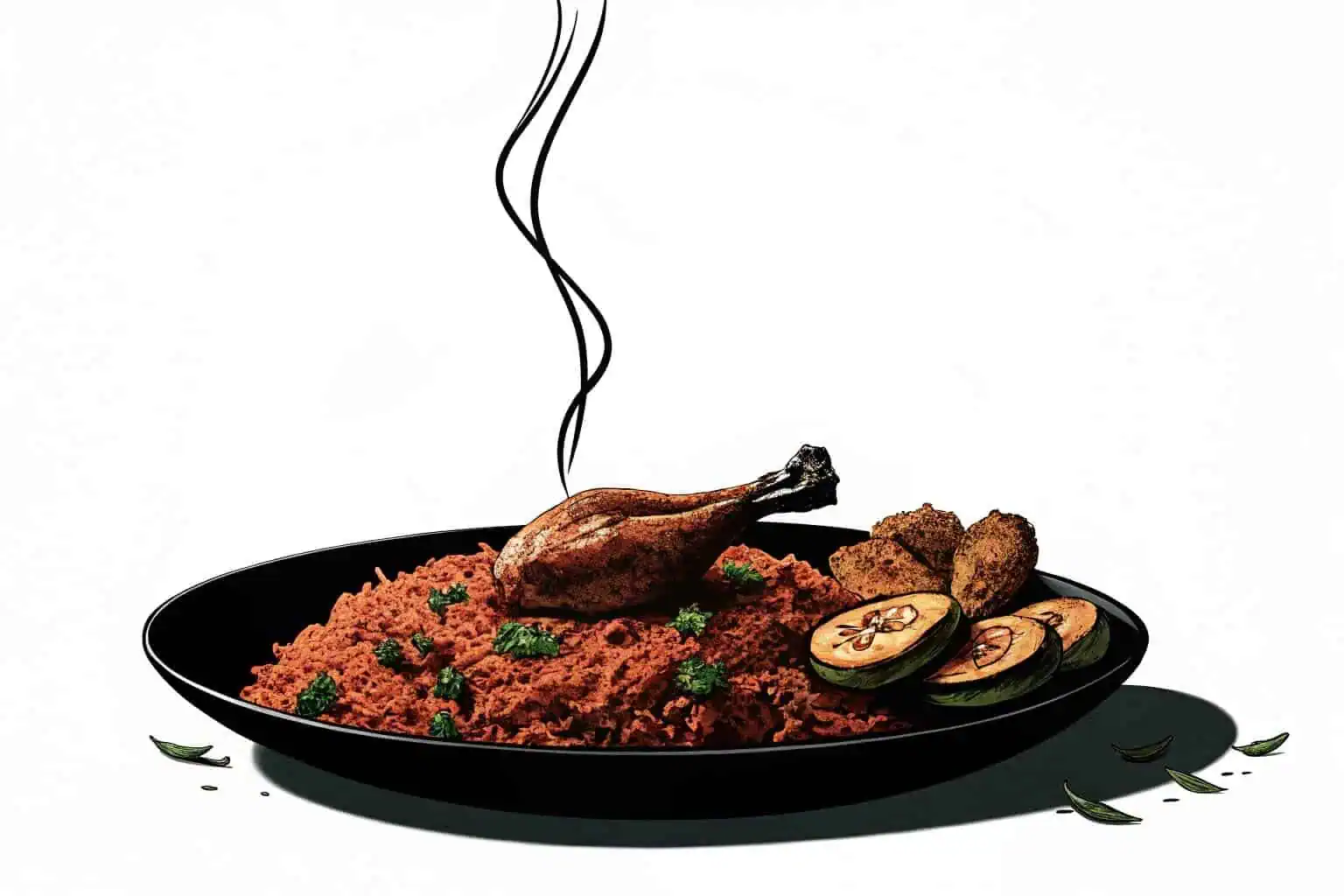What is the best fish to eat in Ghana?
Craving an authentic Ghanaian culinary adventure but unsure where to start with its rich seafood? Discover the top fish that will tantalize your taste buds and enrich your journey.
For an unforgettable taste of Ghana, tilapia often stands out, especially when grilled or fried and served with local staples. It's a delicious, widely available, and culturally significant choice.

As someone who has spent a good deal of time exploring Ghana's vibrant food scene, I've found that the question of the "best" fish is wonderfully complex. It's not just about taste, but also about the experience, the culture, and the stories behind each dish. Let's dive deeper into what makes Ghanaian seafood so special, and I'll share some of my personal favorites and observations along the way.
What is the most popular fish in Ghana?
Wondering which fish graces most Ghanaian tables? You might be surprised by the variety and the reasons behind its popularity, from taste to affordability.
Mackerel, locally often called "salmon" or "herrings" (though distinct species), is incredibly popular due to its affordability, rich flavor, and versatility in many Ghanaian dishes like stews and soups.

From my experience, walking through any local market in Ghana, you'll see stacks of smoked, dried, or fresh mackerel1. It's a staple, and for good reason. It forms the backbone of many household meals. The rich, oily flavor of mackerel lends itself beautifully to the robust spices used in Ghanaian cooking2. I've seen it transformed in countless ways, each more delicious than the last. It's not just about the taste; it's about accessibility. For many families, mackerel provides essential protein and nutrients without breaking the bank. This widespread availability and affordability are key to its status as arguably the most popular fish.
Why Mackerel Reigns Supreme
I think mackerel's dominance comes down to a few key factors. Firstly, its strong flavor profile holds up well against the bold spices common in Ghanaian cuisine. Secondly, it's relatively inexpensive compared to other fish varieties, making it accessible to a larger portion of the population. Thirdly, it's incredibly versatile – you'll find it smoked, salted, fried, or stewed.
| Factor | Description |
|---|---|
| Flavor3 | Rich, oily, and robust, complementing spicy Ghanaian dishes. |
| Affordability4 | Generally more budget-friendly than other types of fish. |
| Versatility5 | Can be smoked, dried, fried, grilled, or used in stews and soups. |
| Availability | Widely available in fresh, smoked, and dried forms across the country. |
Other Widely Consumed Fish
While mackerel is a frontrunner, other fish also enjoy significant popularity. Sardinella6 (often referred to as herrings) and anchovies7 (keta or "one man thousand") are also very common, especially in smoked or dried forms, adding depth to sauces and stews. Tilapia, as mentioned, is a favorite for grilling and frying, particularly in restaurants and for special occasions. I've noticed that regional preferences also play a part; coastal areas might have easier access to a wider variety of fresh sea fish, while inland areas might rely more on freshwater fish like tilapia or smoked/dried sea fish.
What is Ghana's most popular food?
Curious about the dish that truly captures the heart of Ghanaian cuisine? It's a flavorful, beloved staple that unites people across the nation.
Jollof rice is arguably Ghana's most popular and iconic food, a one-pot rice dish cooked in a rich tomato-based stew, often fiercely debated for its supremacy in West Africa.

If there's one dish that I've seen ignite passionate conversations and bring smiles to faces in Ghana, it's Jollof rice. It's more than just food; it's a cultural icon8, a source of national pride, and a staple at almost every celebration, gathering, or even a regular weekday meal. The aroma of Jollof cooking is unmistakable and incredibly inviting. I've had the pleasure of tasting countless versions, each with a slightly different family recipe or a chef's unique touch, but the core elements of rice, tomatoes, onions, peppers, and a blend of aromatic spices remain. It's often served with chicken, beef, fish, or eggs, and a side of shito (spicy black pepper sauce) and sometimes fried plantains. The friendly rivalry with Nigeria over who makes the best Jollof is a testament to its importance in the region.
The Anatomy of Jollof Rice
What makes Jollof so special? I believe it's the perfect marriage of simple ingredients transformed into something extraordinary. The rice is cooked in a flavorful tomato and pepper stew, absorbing all the rich tastes. The specific blend of spices can vary, but often includes ginger, garlic, thyme, bay leaf, and sometimes curry powder.
| Component | Description |
|---|---|
| Rice | Usually long-grain parboiled rice9, which holds its shape well. |
| Stew Base | Tomatoes, red bell peppers, onions, scotch bonnet peppers (for heat). |
| Protein | Often chicken, beef, or fish, sometimes cooked in the stew or served alongside. |
| Spices | Ginger, garlic, thyme, bay leaf, curry powder, nutmeg (varies by recipe). |
Beyond Jollof: Other National Favorites
While Jollof might wear the crown, Ghana boasts a rich tapestry of popular dishes. Banku and Tilapia is another iconic pairing, especially beloved for its contrasting textures and flavors. Fufu10, a starchy dough made from cassava and plantains, served with various soups (like light soup, groundnut soup, or palm nut soup), is a staple for many. Waakye, a hearty dish of rice and beans, is a popular breakfast or lunch option. Kenkey, fermented corn dough, often served with fried fish and pepper sauce, is another widely enjoyed food. Each of these dishes tells a story of Ghana's diverse culinary heritage, and I've found that exploring them is like taking a journey through the country's culture and history.
What is the most consumed meat in Ghana?
Exploring Ghana's culinary landscape, have you wondered which meat takes center stage in daily meals and festive occasions? The answer reflects both tradition and evolving tastes.
Chicken is the most widely consumed meat in Ghana, favored for its versatility, relative affordability compared to other meats like beef or goat, and its presence in many popular dishes.

From my observations across Ghana, chicken seems to be everywhere. Whether it's in the bustling street food stalls selling grilled or fried chicken11, in the hearty stews and soups served in homes and local eateries, or as the centerpiece of celebratory meals, chicken holds a prominent place. I've noticed that its popularity stems from a combination of factors. It's generally more affordable than beef or mutton for many families. Its taste is widely accepted, and it adapts well to various cooking methods and flavor profiles, from spicy marinades to rich, savory stews. The local poultry industry, though facing competition from imports, plays a significant role in its availability. I've enjoyed countless chicken dishes, from simple grilled pieces seasoned with local spices to elaborate chicken light soup served with fufu.
Why Chicken Leads the Pack
Several factors contribute to chicken's top position in Ghanaian meat consumption. It's often seen as a healthier option by some compared to red meats. The speed at which chickens can be raised compared to larger livestock also contributes to a more consistent supply.
| Factor | Influence on Consumption |
|---|---|
| Affordability12 | Generally less expensive than beef, goat, or mutton. |
| Versatility13 | Adapts well to grilling, frying, stewing, and soups. |
| Availability | Widely available through local farming and imports. |
| Cultural Acceptance14 | Enjoyed across different ethnic groups and social classes. |
Other Meats in the Ghanaian Diet
While chicken is king, other meats are also important. Beef is quite popular, especially for stews and grilled kebabs (chichinga). Goat meat is highly prized, often reserved for special occasions or found in specific dishes like goat light soup; its rich flavor is distinctive. Mutton (sheep meat) is also consumed, though perhaps less frequently than chicken or beef. In some rural areas, bushmeat15 (game like grasscutter or antelope) has traditionally been a part of the diet, though its consumption is increasingly subject to conservation concerns and regulations. I've found that the choice of meat often depends on the occasion, the specific dish being prepared, and regional availability and preferences. For instance, in the northern parts of Ghana, guinea fowl is a delicacy and very popular.
What kind of fish are reared in Ghana?
With a growing population and demand for seafood, are you curious about which fish species are being actively farmed to supplement wild catches in Ghana?
Tilapia is the most predominantly reared fish species in Ghana's aquaculture sector, followed by African catfish. These species are chosen for their adaptability and market demand.

During my exploration of Ghana's food systems, I've been fascinated by the growth of its aquaculture sector. While marine fisheries are vital, fish farming is increasingly important to meet the local demand for fish. Tilapia, particularly the Nile tilapia (Oreochromis niloticus)16, is by far the star of Ghanaian aquaculture. I've visited several fish farms, from small-scale ponds to larger commercial operations, and tilapia is almost always the primary species. They are relatively easy to breed, grow fast, and are tolerant of a range of water conditions, making them suitable for Ghana's climate. Plus, Ghanaians love to eat tilapia! African catfish (Clarias gariepinus)17 is another important farmed species. It's known for its hardiness and ability to breathe air, which allows it to be stocked at high densities. I've seen a growing interest in catfish farming due to its good market price and consumer acceptance.
Key Farmed Fish Species
The focus on tilapia and catfish is strategic. These fish are well-suited to the local environment and have established consumer markets. There's ongoing research and development to improve breeding techniques18, feed quality, and disease management19 to boost the productivity of these farms.
| Species | Key Characteristics for Farming |
|---|---|
| Nile Tilapia | Fast growth, good feed conversion, tolerant of various water conditions, high market demand. |
| African Catfish | Air-breathing capability (allows high-density stocking), hardy, good market value. |
The Future of Aquaculture in Ghana
I believe aquaculture holds immense potential for Ghana. It can help reduce the pressure on wild fish stocks, create employment, and improve food security. The government and various organizations are actively promoting sustainable aquaculture practices. There's also exploration into farming other species, though tilapia and catfish currently dominate. Challenges remain, such as access to quality fish feed and fingerlings, and managing fish diseases. However, the commitment I've seen from farmers and support institutions makes me optimistic about the future growth of fish farming in Ghana. It's a critical component in ensuring that fish, a vital source of protein, remains accessible and affordable for the Ghanaian population. I've also noticed that many of our Bancy collapsible fish tanks20 are used in these aquaculture settings, providing flexible and durable solutions for fish rearing, which is something I'm quite proud of.
Conclusion
Ghana's culinary scene offers a delightful journey, with popular fish like mackerel and farmed tilapia, iconic Jollof rice, and widely consumed chicken, all reflecting rich traditions and evolving tastes.
-
Discover the nutritional advantages of mackerel, a staple in Ghanaian cuisine, and how it can enhance your diet. ↩
-
Explore the essential ingredients that define Ghanaian cooking and learn how to recreate these vibrant flavors at home. ↩
-
Explore the unique flavor profiles of fish in Ghanaian dishes to enhance your culinary experience. ↩
-
Discover budget-friendly fish options in Ghana to make your meals delicious without breaking the bank. ↩
-
Learn about the various cooking methods for fish in Ghana to diversify your meal preparations. ↩
-
Exploring the health benefits of Sardinella can enhance your understanding of its nutritional value and culinary uses. ↩
-
Discovering the various culinary applications of anchovies can inspire new recipes and enhance your cooking skills. ↩
-
Discover how Jollof rice represents cultural identity and pride in West Africa, making it a must-know dish for food enthusiasts. ↩
-
Discover the unique advantages of long-grain parboiled rice, including its cooking properties and nutritional benefits. ↩
-
Learn about the traditional preparation of Fufu and its role in Ghanaian meals, showcasing the country's culinary diversity. ↩
-
Exploring recipes for grilled or fried chicken can inspire you to try authentic Ghanaian flavors and cooking techniques. ↩
-
Exploring this link will provide insights into how affordability influences meat consumption and choices. ↩
-
Understanding meat versatility can enhance your cooking skills and meal planning, making it easier to enjoy diverse dishes. ↩
-
This resource will shed light on how cultural factors shape our food preferences and consumption habits. ↩
-
Understanding the conservation issues surrounding bushmeat can inform responsible eating and wildlife protection efforts. ↩
-
Discover the advantages of Nile tilapia in aquaculture, including its growth rate and adaptability, which are crucial for sustainable fish farming. ↩
-
Learn why African catfish is favored in aquaculture, focusing on its hardiness and market potential, essential for fish farmers. ↩
-
Discover cutting-edge breeding techniques that enhance fish farming productivity and sustainability. ↩
-
Learn how effective disease management strategies can significantly boost fish farm productivity and health. ↩
-
Discovering the advantages of Bancy collapsible fish tanks can enhance your knowledge of innovative solutions in fish farming. ↩